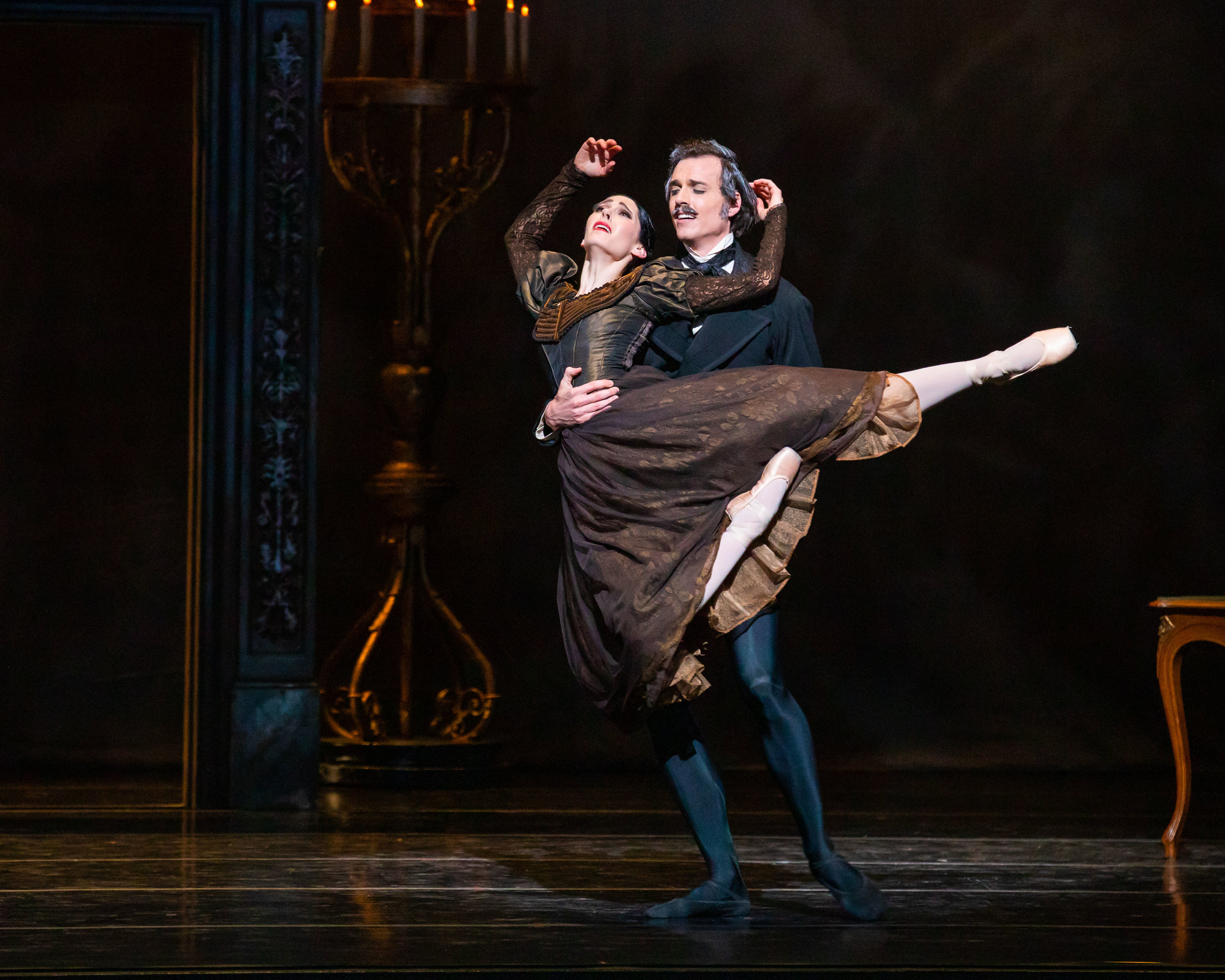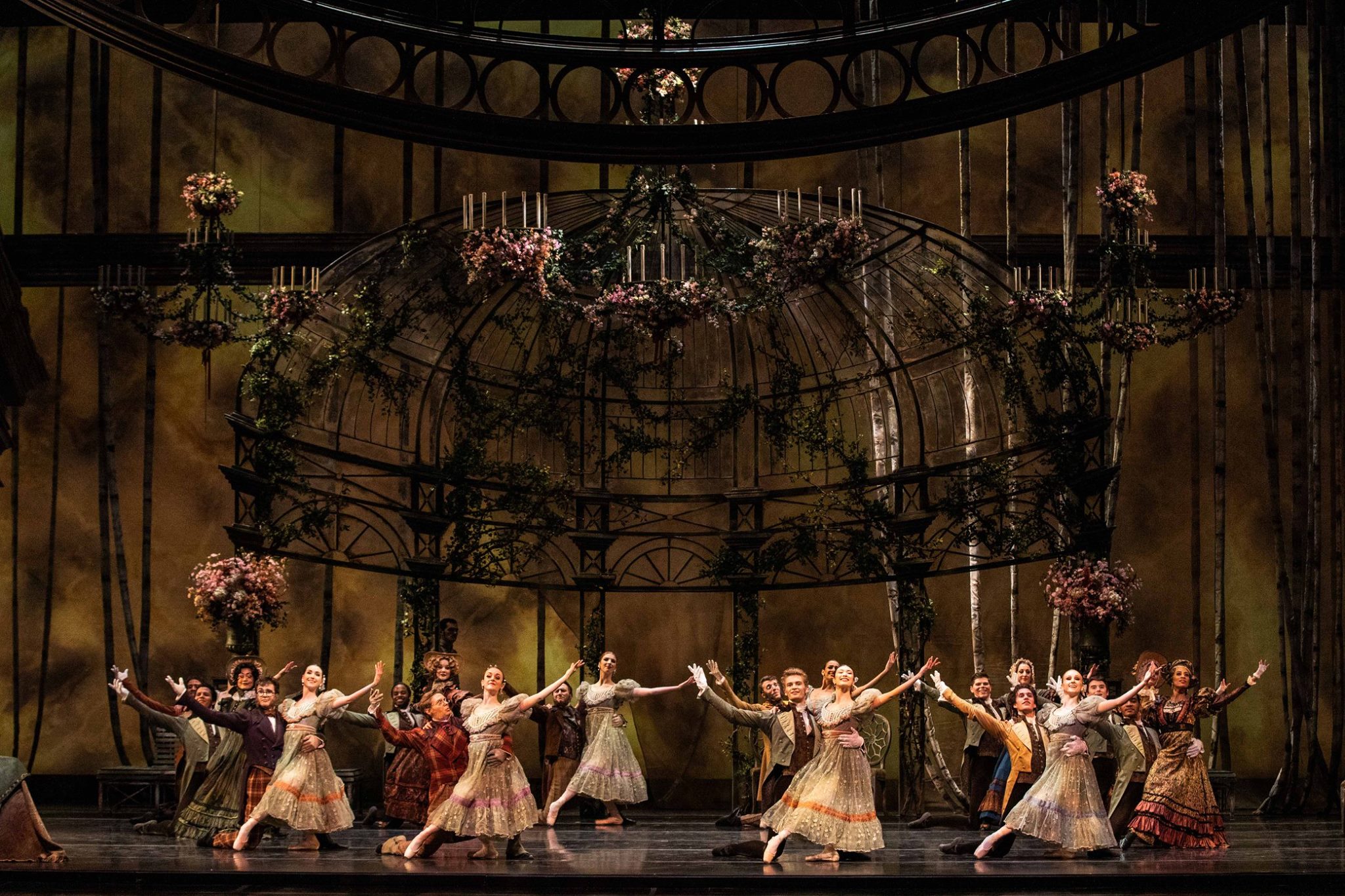Dust. Breath. Place is Efren Corado Garcia’s story. It is one of his stories, and Garcia is one person in the story, which is also made up of many stories and many people. On its most basic terms, Dust. Breath. Place is the story of Garcia’s journey as a young child from Guatemala to the United States and a reflection on that core memory as it pertains to his current self and life here in Utah.
The cast included faces mostly familiar to me, made up Garcia’s friends and collaborators from his time dancing in Repertory Dance Theatre - Natalie Border, Sarah Donohue, Austin Hardy, Tiana Lovett, and Tyler Orcutt. Technical direction was executed by RDT’s resident technical wizard Pilar Davis, and the simple, ingenious costumes were created by Carly Schaub. The production was sponsored and produced through RDT’s Link Series and Atlas Peak. An illustration by Tim Guthrie, drawn from the final image of the dancers on stage, graced the programs. Garcia called our attention to and thanked this group, and his larger community, both before and after the performance.
Segmented into nine sections, Dust. Breath. Place followed a journey, from a beginning to a middle to an end, and on to somewhere that was a bit of all three – new opportunity, process, something to stick around. Each short section received a minimally descriptive title on the program; home, first departure, migration, second departure, scorn/internal call, third departure, home revisited, dreams, and memories. These “chapters” pinned characters to distinct, if vague, points in time, and space kept them moving forward linearly as a narrative. Certain gestures and music molded the story and its characters, especially the sounds of dancers stamping the soles of their feet into the earth, of vibrant warm voices, clicking crickets, rumbling thunder, and of sweet, complicated reunion.
Kinesthetic choices, on the other hand, frequently took direction from cycling and reformulating un-pinnable elements of memory to bind the story together and give it the complex and building sense of an identity formed and remembered. The dancers walked forward through each stage, passing through movements, sounds, and emotional landscapes, gathering and trailing all behind them.
The costumes, first appearing uniformly dark and plain, were revealed to have vibrant and richly colorful patterns printed on the inside. These were made visible by each dancer, one by one over time, as they pulled up a pant leg and turned it inside out, hooking it over their shoulder to fashion a bright cross-body sash. This simple, inventive construction by Carly Schaub was delightful and highly effective in communicating various transformative states.
Garcia offered additional insights to the audience both before and after the show – earnestly and generously giving us something while firmly asking us to listen deeper. He shouted out to his community, filled in more of the details from his personal journey underlying the show, and outlined a litany of critical contextual factors regarding its creation and existence.
Garcia described the process he undertook to produce the folk dance-informed sequences that opened the show. Because he had immigrated at such a young age, before some cultural inheritances could fully and consciously land, Garcia had to perform research (in a literal, academic sense; different than the “research” that has gained popularity with dancers recently, which often describes an introspective, experimental approach) into Guatemalan folk dance traditions in order to approximate a dance that could imagine the “Efren who would have been” if he had never left the town of his birth.
When the same patterns were reprised later on, they followed one of the most emotionally dark and kinetically tense sections of the piece. Austin Hardy walked on stage in a moment of silence towards a painfully contorted and straining Tyler Orcutt, and began to stamp out the call-and-response-like pattern from the beginning, the familiar rhythm both warming and softening Orcutt mid-contraction and gently pulling the whole group back together. Garcia told us that for this reprisal he took those initial “what-if Efren” movements, and re-adapted them to reflect the real life Efren,who lives in Utah as a Guatemalan American.
Garcia also noted his thoughts on “making an ethnic dance for people who aren’t ethnic,” making the critical distinction (too often unacknowledged) that his cast of white dancers isn’t and can’t portray him or embody his experiences. What they are doing instead, he noted, is listening and thereby meeting him at a level of understanding which enabled them to understand how to transmit the work in a way that appropriately points the viewer to its referent.
Speaking later about a moment influenced by his reunion with his mother (the two were separated when he was very small because she paved the way for the rest of her family to follow by making the trip first), Garcia described it as “a simple way to make a picture of something very complicated… concurrent duets of bitterness and tenderness.” Orcutt and Hardy would grab each other’s shoulders and spin around, throwing their weight heavily and rotating faster and faster until Orcutt’s feet flew into the air while Hardy kept spinning him tenderly, his hands around Orcutt’s neck. Tiana Lovett and Sarah Donohue weaved around them, gliding and chassé-ing into floating arabesques, their bodies open, forward, and linked side by side. These sequences were repeated throughout the section.
Moments of contradiction and juxtaposition ran throughout the piece. Garcia noted that he filtered depictions of intense struggle and danger through the sense of wonder and adventure experienced by a young child, such as he was when the events actually took place. Watching it, I could glimpse that feeling, especially when the whole group raced around the stage at top speed, jockeying for places with the biggest, widest grins each of them could muster.
In the penultimate section, Tiana Lovett danced a beautifully light and sincere solo that evoked the joy of opened horizons and newly possible aspirations. The end threaded motifs together from all the previous sections, a true re-encapsulation that looked back upon the whole. Which is as memory is: everything you’ve already done will always keep washing through you as you continue on.
The evening was a beautiful, transformative, and emotionally affecting experience, performed in the Rose Wagner’s small, black box studio theater with simple staging and just two rows of seating. It was impeccably rehearsed and polished in its presentation, which allowed the message and experience to clearly and fully stand on their own. The themes and modes of communication felt as intimate as a confidence received from a good friend, and equally as expansive, and called out a mass of other stories, questions, suggestions, and challenges, stretching from border to arbitrary border.
A simple way to paint a complicated picture. How do you un-muddy something so complex? How do you unearth a way to reach an understanding? Ask your friends about their stories, was Garcia’s advice. And then listen.
Emily Snow is a Denver native who now calls Salt Lake City home. She has most recently been seen performing with Municipal Ballet Co. and with Durian Durian, an art band that combines electronic music and postmodern dance.











